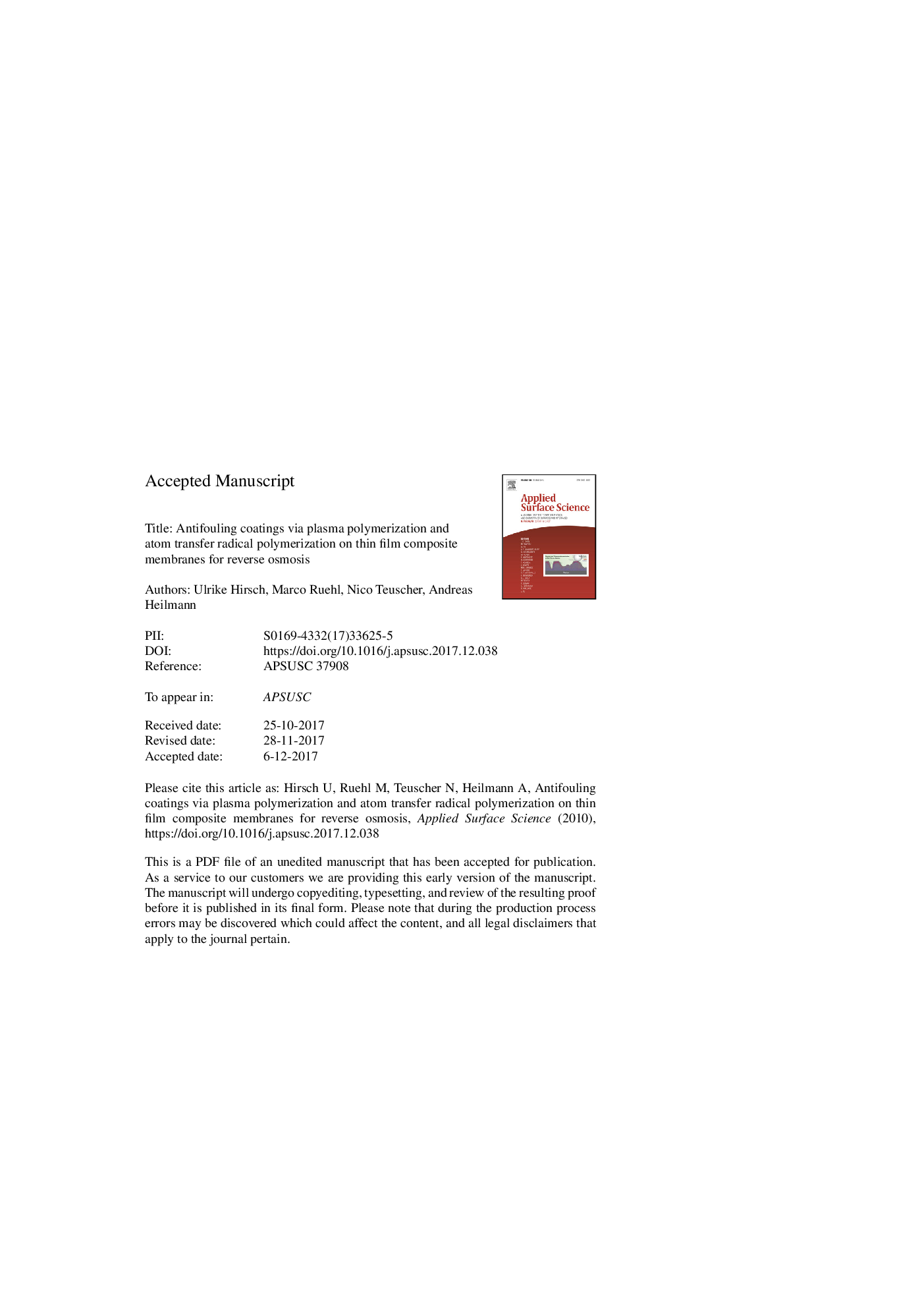| Article ID | Journal | Published Year | Pages | File Type |
|---|---|---|---|---|
| 7835711 | Applied Surface Science | 2018 | 22 Pages |
Abstract
A major drawback to otherwise highly efficient membrane-based desalination techniques like reverse osmosis (RO) is the susceptibility of the membranes to biofouling. In this work, a combination of plasma activation, plasma bromination and surface-initiated atom transfer radical polymerization (si-ATRP) of hydrophilic and zwitterionic monomers, namely hydroxyethyl methacrylate (HEMA), 2-methacryloyloxyethyl phosphorylcholine (MPC) and [2-(methacryloyloxy)ethyl]-dimethyl-(3-sulfopropyl)ammonium hydroxide (SBMA), was applied to generate non-specific, anti-adhesive coatings on thin film composite (TFC) membranes. The antifouling effect of the coatings was shown by short-time batch as well as long-time steady state cultivation experiments with the microorganism Pseudomonas fluorescens. It could be shown that plasma functionalization and polymerization is possible on delicate thin film composite membranes without restricting their filtration performance. All modified membranes showed an increased resistance towards the adhesion of Pseudomonas fluorescens. On average, the biofilm coverage was reduced by 51.4-12.6% (for HEMA, SBMA, and MPC), the highest reduction was monitored for MPC with a biofilm reduction by 85.4%. The hydrophilic coatings applied did not only suppress the adhesion of Pseudomonas fluorescens, but also significantly increase the permeate flux of the membranes relative to uncoated membranes. The stability of the coatings was however not ideal and will have to be improved for future commercial use.
Keywords
Related Topics
Physical Sciences and Engineering
Chemistry
Physical and Theoretical Chemistry
Authors
Ulrike Hirsch, Marco Ruehl, Nico Teuscher, Andreas Heilmann,
